In 1954 the 22nd Special Air Service (SAS) Regiment required a replacement ‘Sabre’ (fighting) squadron for deployment during the ‘Emergency’ in Malaya. The Parachute Regiment were invited to provide the personnel. Around 80 officers and men were selected from a large number of volunteers to form the Independent Parachute Squadron under command of Major EWD Coventry. It consisted of an HQ Troop and four ‘sabre’ troops of 14 soldiers sub-divided into three patrols.
The squadron formed up at Lille Barracks, Aldershot, on 7 Feb 1955 and comprised of the following officers and senior NCOs in the Squadron Headquarters:
O.C: Major EWD. Coventry (1 Para)
2 i/c: Captain D Chatterton (2 Para)
S.S.M: WOII Philipson (3 Para)
S.Q.M.S.: S/Sgt Hay (2 Para)
In addition the four 'sabre' troops were initially led by:
11 Troop: Lt Williams (1 Para); Sgt. Butler (1 Para)
12 Troop: Lt Watts (3 Para); Sgt. Mitchell (3 Para)
13 Troop: Lt Oldfield (2 Para); Sgt. Cannon (2 Para)
14 Troop: Lt Clark (3 Para); Sgt. Ferguson (Depot)
The Independent Parachute Squadron joined the SAS for operations in 1955 following preparatory jungle training. Formally assimilated into the 22 SAS regimental structure, it was later known as The Parachute Regiment Squadron (22 Special Air Service Regiment).
The squadron patrols penetrated deep jungle on foot, by parachute drop or helicopter insertion. Carrying a variety of weapons and two weeks' rations they were re-supplied by air. Jungle patrolling is arduous, lonely, hazardous and often unrewarding; 500 hours of patrolling was required on average to achieve one ‘contact’ with the enemy.
It spent most of 1955 patrolling the Iskander swamps of southern Malaya and then the southern Selanger swamps of Tasek Bera. The task was to gain information, destroy Ladangs and terrorist bands through ambush and rescue oppressed Aboriginals. The aim was to force the CTs to jungle fringe areas where they could be mopped up by conventional security forces. Most of the second year of the deployment was spent in the mountain area between Ipoh and the Cameron Highlands, where some successes were achieved.
In April 1957 the squadron tour expired and it was disbanded. Troops were returned to the UK and re-posted to their parent units.
Read More

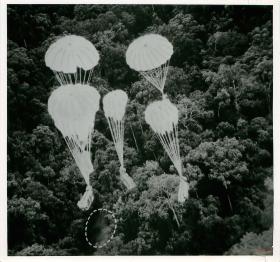
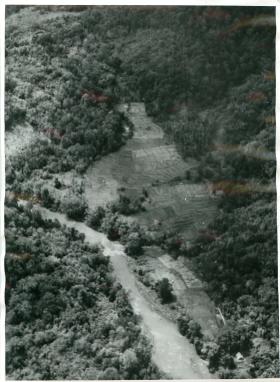
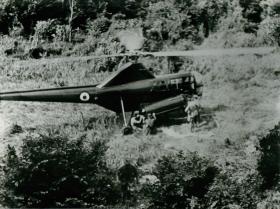
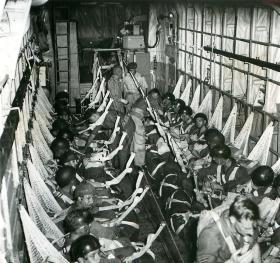
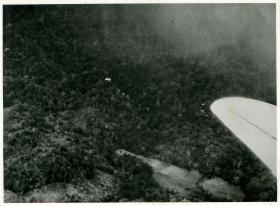
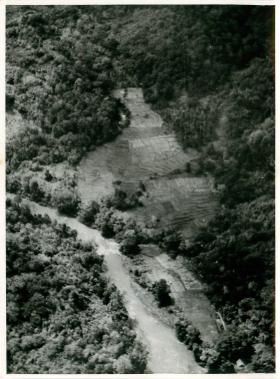
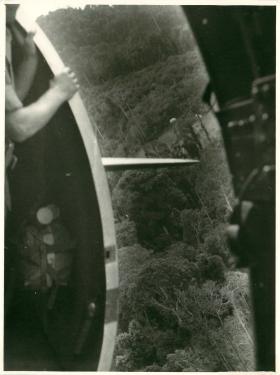
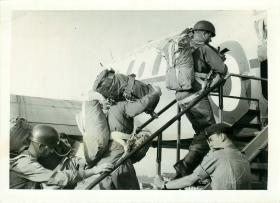
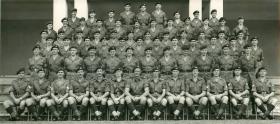
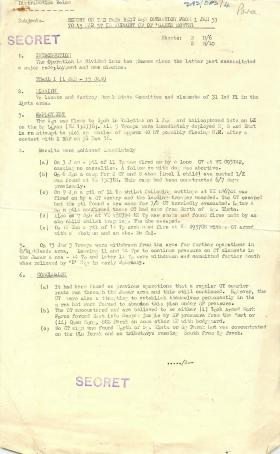
Latest Comments
I have read the pages relating to the Independent Parachute Squadrons deployment in Malaya during the 'Malayan Emergency' and have gained some valuable information relating to my Fathers service while serving with this elite unit. My father, Trooper Sculthorpe can be seen back row second left in the Squadron photo.
My father affords a mention in the Pegasus Journal April 1956. I have gained more knowledge about my Fathers service by reading these excellent journals than I ever did from the man himself!
I would very much like to add some photos as I have a few photos of the Parachute Regiment Squadron (22 Special Air Service Regiment) while deployed in Malaya and I hope some of the people who view these pages will appreciate them as a timeline to Britain’s now distant colonial wars.
In the meantime I would like to submit and article my Father wrote for a reunion of the Parachute Regiment Squadron (22 Special Air Service Regiment) that I think may have been published elsewhere.
PARACHUTE REGIMENT SQUADRON
22nd Special Air Service Regiment, Malaya 1955-57
In late 1954 the British 16th Airborne Brigade had returned to the UK from the hated Suez Canal Zone, to be permanently stationed in their "Depot Town", picturesque, pastoral Aldershot. At that time, there were no plans or prospects within Airborne Forces for overseas postings.
During the 1954 Christmas leave period, the War Office announced that a 75-man contingent of volunteers from the Parachute Regiment would join the desperately under-strength 22nd Special Air Service Regiment which was heavily involved in the Malayan conflict. Needless to report, volunteer applications were oversubscribed.
The selection process was completed by February 1955 and "Independent Squadron The Parachute Regiment" was created under command of the legendary Major Dudley Coventry, a brilliant officer with a very distinguished, though non-conformist, military record.
After a short period of isolated independence in North Camp, followed by two weeks embarkation leave, the Squadron was transported by RAF Hastings aircraft from Lynham to RAF Changi, Singapore. At this point in British Army history, this was the longest distance any single unit had been transported by air.
Accommodated in Sciangor Barracks, adjacent to RAF Changi and the FARELF Parachute Training School, the Squadron underwent training in techniques specifically developed for parachuting into dense jungle. These included a Bergen Rucksack on the chest (no reserve parachute) and a 200 ft length of webbing, strapped to the leg, which was used to absail down to terra firma. This very hairy practice of "tree jumping" relied on the parachute canopy being caught in the trees; often it did not - with disastrous consequences. Eventually, practice non-operational "tree jumping" was discontinued due to high casualties. A further innovation learned at this time was jumping from SSS Whirlwind helicopters.
From Changi the Squadron moved to The Army School of jungle Warfare, at Kota Tinggi in Malaya. British and Australian instructors taught basic infantry tactics with assistance from a company of Gurkhas. This course ended with the Squadron's first operation off the East coast of Southern Malaya. Landing 'John Wayne-style" from Navy MTBS, the Squadron stormed ashore into flat, dense, sea- swamped jungle. Unfortunately, nobody had considered the water supply (never usually a problem in jungle). Here the water was salty, and though the coconut milk was not, it was no real substitute - a miserably disastrous "learning experience".
Finally, to SAS HQ in Kuala Lumpur and a new designation – “Para Sqn 22 SAS Regt". A further four weeks operational training in SAS "Deep Jungle Penetration" techniques with various personnel taking intensive courses on signalling, medics, etc. The Squadron now became fully operational comprising four troops of one Officer and fifteen Other Ranks, HQ Troop OC and seven ORs (SQMS and four ORs in SAS base).
Unfortunately, injuries and sickness would often decimate manpower by up to 20%, meaning heavier workloads for those still operational.
The "sharp end" of SAS operations has been graphically covered elsewhere, so this writer will only comment that it was arduous and dangerous work. Equipment was as good as any available and inter-service cooperation from RAF, RNZAF (re-supply), Navy and RAF helicopters, Glider Pilot Regiment (spotter planes), other military units, etc, etc, was usually excellent.
An operation would be for up to three months with re-supply by parachute every fourteen days, security permitting. Fresh meat and bread would be dropped and consumed the same day, before the beasties got it. It was not unusual for supply chutes to "whistle in" or become other- wise inaccessible. These would invariably have the mail or rum ration aboard - tough, but true. One of the attractions to this type of soldiering was the accumulation of pay whilst on operations. At the end of an Op, after a couple of days debriefing, medical tests and the obligatory lecture from the medical officer on the perils of passion, the Squadron would be dispatched on seven days leave. With pockets full of hard- earned money, the deprivations of three months could be rectified in grandest style amongst the cream of high society in Singapore or Penang.
After leave, a real rest period on the small island of Blakang Nlati, a short ferry ride from Singapore Docks. Here the SAS had a rest and re-training camp in an idyllic beachfront setting. Light re-training until noon, when the SQMS would open the beer bar (credit available, proceeds to Squadron funds), the remainder of the day would be spent on various sporting activities or simply lounging around, regaining lost weight. This ten-day sojourn would culminate in a Squadron barbecue with nurses, WRNS, WAAFS, etc, invited to the fun, frolic and inevitable punch-up.
A final 10-14 days before the next Op would be spent on more rigorous training, re-supply, courses, and so forth, back at Base HQ. This would be the period when ridiculous accusatory notes would arrive at the SSM's desk from MPs, or 'Snowdrops', alleging misdemeanors by Squadron personnel whilst on leave. These minor irritants were usually dealt with by the CC in the form of a fine.
On completion of their two-year tour and a notable contribution to the overwhelming success of SAS operations in Malaya, the Para Sqn was disbanded on return to the UK. A large proportion of personnel transferred to the SAS and returned to Malaya, whilst others rejoined their Para battalions.
Many Senior NCOs and W0s, Para and SAS started their military careers in the Para Sqn. SSM Ken Philipson, one of Airborne's original pathfinders, became RSM of SAS and was later commissioned. At the end of his British Army career he joined Lt Col Coventry in Rhodesia as an SAS Major. Sadly, Lt Col Coventry was brutally murdered in 1993. Lt (requested anonymity) former Troop Commander, is now Lt Gen Sir (requested anonymity) after a brilliant career is now retired and owns the slowest horses in British racing. The most 'progressed through the ranks" is Lt Col Peter Geraghty who spent his first three years as a Private.
Add Comment
In order to add comments you must be registered with ParaData.
If you are currently a ParaData member please login.
If you are not currently a ParaData member but wish to get involved please register.